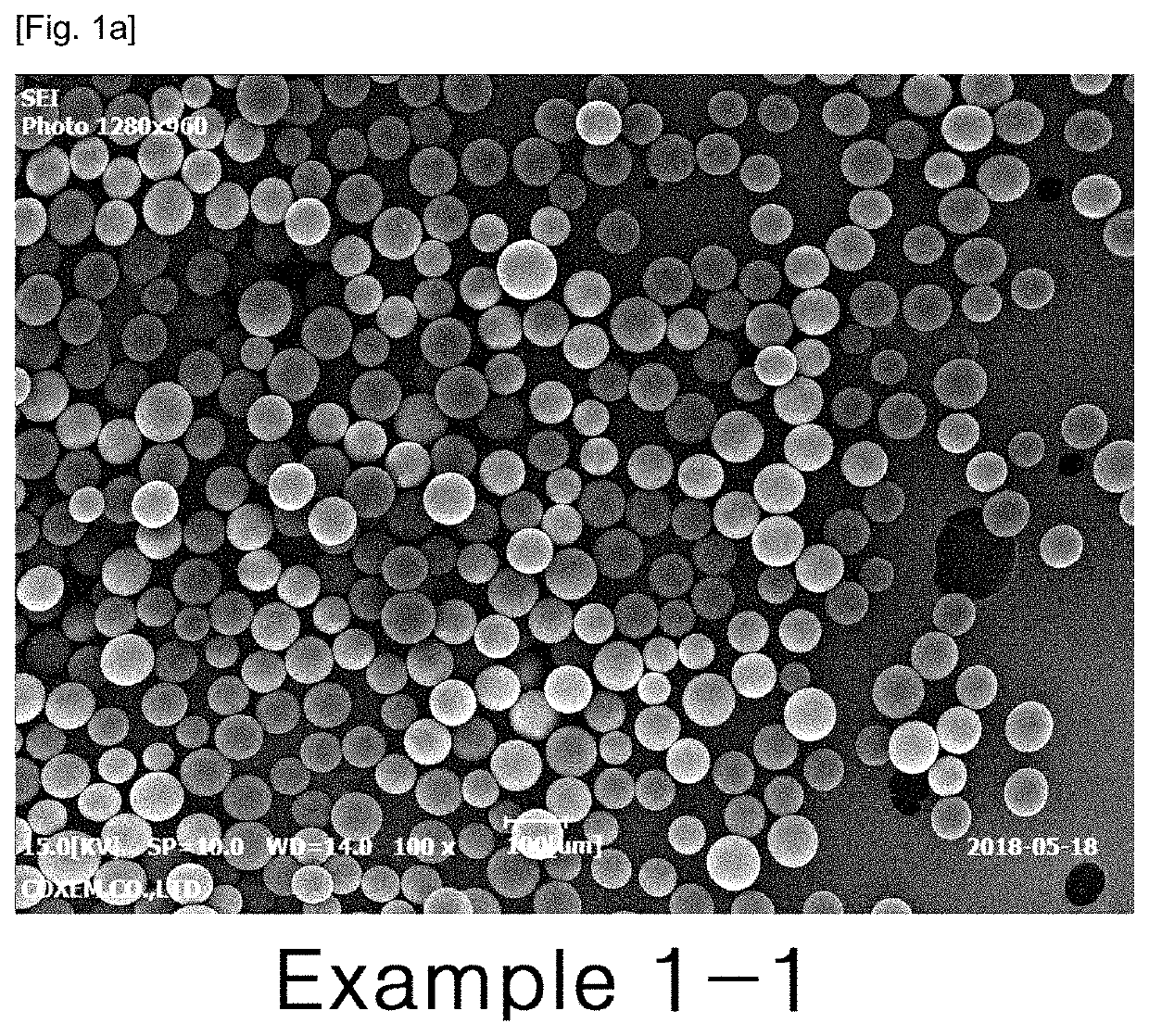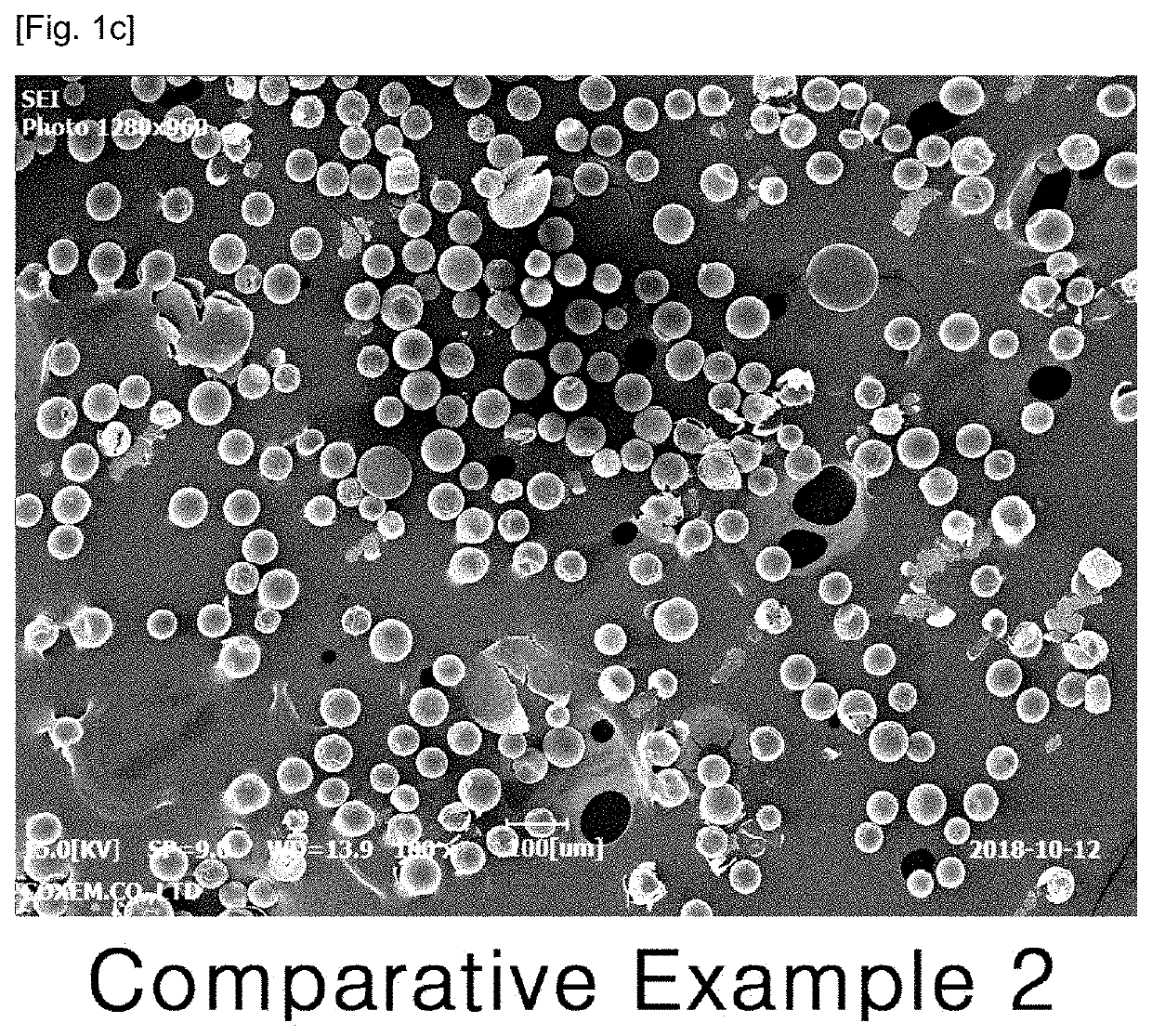Method for preparing biodegradable microspheres having improved stability and storage stability
a biodegradable microsphere and microsphere technology, applied in the field of biodegradable microspheres, can solve the problems of insufficient removal of such organic solvent mixtures, adverse effects of solvent on the stability of the final product, undesirable residual toxic solvents in the final product, etc., to achieve the effect of effectively preparing biodegradable microspheres and reducing the residual amount of toxic solvents or organic solvent mixtures
- Summary
- Abstract
- Description
- Claims
- Application Information
AI Technical Summary
Benefits of technology
Problems solved by technology
Method used
Image
Examples
example 1
n of Microspheres Prepared by Different Continuous Phase Exchange Time
[0062]3.5 g of a biocompatible polymer Resomer R203H (manufacturer: Evonik, Germany; poly(D,L-lactide) Mw: 18,000 to 28,000) and 1.5 g of donepezil base (manufacturer: Neuland Laboratories, India) were dissolved in 9.2 g of dichloromethane (JT Baker, USA) to prepare a dispersed phase. The dispersed phase was prepared by stirring for 30 minutes or more for sufficient dissolution and then used. An aqueous solution of 1% (w / v) polyvinyl alcohol (viscosity: 4.8 to 5.8 mPa·s) was used as a continuous phase. A container including 460 mL of the continuous phase was connected to an emulsification apparatus equipped with a membrane having 40 μm diameter pores, while the above dispersed phase was simultaneously injected into the apparatus to produce the microsphere suspension. Then the resulting microsphere suspension was placed in a preparation vessel and stirred at 150 rpm.
[0063]The temperature of the membrane emulsificat...
example 1-1
of Microspheres Prepared by Different Continuous Phase Exchange Time
[0064]3.5 g of a biocompatible polymer Resomer R203H (manufacturer: Evonik, Germany) and 1.5 g of donepezil base (manufacturer: Neuland Laboratories, India) were dissolved in 9.2 g of dichloromethane (JT Baker, USA) to prepare a dispersed phase. The dispersed phase was prepared by stirring for 30 minutes or more for sufficient dissolution and then used. An aqueous solution of 1% (w / v) polyvinyl alcohol (viscosity: 4.8 to 5.8 mPa·s) was used as a continuous phase. A container including 460 mL of the continuous phase was connected to an emulsification apparatus equipped with a membrane having 40 μm diameter pores, while the above dispersed phase was simultaneously injected into the apparatus to produce the microsphere suspension. Then the resulting microsphere suspension was placed in a preparation vessel and stirred at 150 rpm.
[0065]The temperature of the membrane emulsification apparatus and the preparation vessel w...
example 1-2
of Microspheres Prepared by Different Continuous Phase Exchange Time
[0066]3.5 g of a biocompatible polymer Resomer R203H (manufacturer: Evonik, Germany) and 1.5 g of donepezil base (manufacturer: Neuland Laboratories, India) were mixed with 9.2 g of dichloromethane (JT Baker, USA) to prepare a dispersed phase. The dispersed phase was prepared by stirring for 30 minutes or more for sufficient dissolution and then used. An aqueous solution of 1% (w / v) polyvinyl alcohol (viscosity: 4.8 to 5.8 mPa·s) was used as a continuous phase. A container including 460 mL of the continuous phase was connected to an emulsification apparatus equipped with a membrane having 40 μm diameter pores, while the above dispersed phase was simultaneously injected into the apparatus to produce the microsphere suspension. Then the resulting microsphere suspension was placed in a preparation vessel and stirred at 150 rpm.
[0067]The temperature of the membrane emulsification apparatus and the preparation vessel was...
PUM
| Property | Measurement | Unit |
|---|---|---|
| particle size | aaaaa | aaaaa |
| particle size | aaaaa | aaaaa |
| diameter | aaaaa | aaaaa |
Abstract
Description
Claims
Application Information
 Login to View More
Login to View More - R&D
- Intellectual Property
- Life Sciences
- Materials
- Tech Scout
- Unparalleled Data Quality
- Higher Quality Content
- 60% Fewer Hallucinations
Browse by: Latest US Patents, China's latest patents, Technical Efficacy Thesaurus, Application Domain, Technology Topic, Popular Technical Reports.
© 2025 PatSnap. All rights reserved.Legal|Privacy policy|Modern Slavery Act Transparency Statement|Sitemap|About US| Contact US: help@patsnap.com



